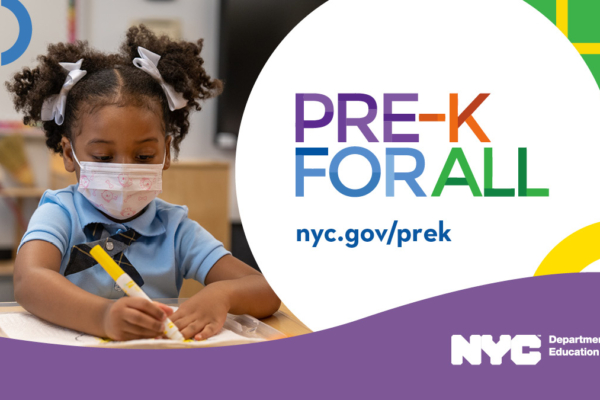New York City this year offered approximately 130,000 spots for public pre-kindergarten (Pre-K and 3-K) programs, but according to the latest data from the city’s Department of Education, only about 70% of these spots have been filled. Despite the city’s efforts to promote free pre-kindergarten education, many families in certain areas are unable to attend their preferred schools due to remote locations, reflecting multiple challenges such as declining child population, insufficient promotion, and uneven allocation of spots.
The city of New York began issuing free early childhood education acceptance notifications to parents in May. According to education website Chalkbeat citing data provided by the Department of Education to the City Council on June 4th, this year approximately 56,000 children turning 4 years old by the end of the year received acceptance notifications for public pre-kindergarten (Pre-K) programs out of the total 70,000 spots available; while 3-K pre-kindergarten programs had 44,000 3-year-old children receive acceptance notifications out of a total of 47,000 spots. Overall, the Department of Education manages around 130,000 early childhood education seats, of which approximately 70% have been filled.
Deputy Director Simone Hawkins pointed out that the causes of vacancies in pre-kindergarten programs include a decrease in the total number of school-aged children, insufficient enrollment promotion, and a gap between the location of the schools and the actual demand. She stated, “The solution is not just to expand enrollment, but to make these pre-kindergarten programs more tailored to the actual needs of families.”
Despite the overall availability of vacant spots, many families have been unable to enroll in their preferred schools. The city government stated that over 6,000 children, about 15% of 3-K applicants, were not placed in their desired schools and instead were allocated to other options, resulting in some children facing long commutes or difficulties in arrangement.
Rebecca Bailin, Executive Director of the childcare advocacy group “New York People United Parenting Alliance,” mentioned that she has received numerous complaints from parents. Some families were assigned to a school that required a 40-minute commute and was difficult to access by subway, making it impossible for their 3-year-old child to endure such a long daily journey, leading them to continue paying for private childcare facilities.
The city government emphasized that this year all families were guaranteed at least one acceptance spot and may potentially secure satisfactory pre-kindergarten programs from the summer waitlist. However, according to data from a study commissioned by the Department of Education, about half of the parents only listed one or two preferred schools, reducing the probability of this happening.
In actuality, the gap between the geographical location of pre-kindergarten programs and the actual demand has been a longstanding issue. According to the city’s Independent Budget Office, the enrollment rates for 3-K programs vary significantly by district: District 23 in central Brooklyn has only a 61% enrollment rate, while District 30 in western Queens has a high rate of 98%.
Hawkins stated that the allocation of pre-kindergarten programs is constrained by contracts signed between the city government and various community organizations responsible for operating the majority of 3-K and Pre-K programs. The city government is currently making efforts to adjust seats within these contracts, including converting some Pre-K seats to 3-K programs, or changing full-year spots designated for low-income families to open applications for all families. The New York City Council will continue advocating for funding to expand promotion efforts, ensuring that more parents are informed about the pre-kindergarten enrollment programs.
Furthermore, the COVID-19 pandemic and rising housing costs have contributed to a decrease in the total child population, leading to vacant spots within New York City’s pre-kindergarten programs. Statistics indicate that from 2020 to 2023, the population of children under 5 years old in New York City decreased by 18%.

